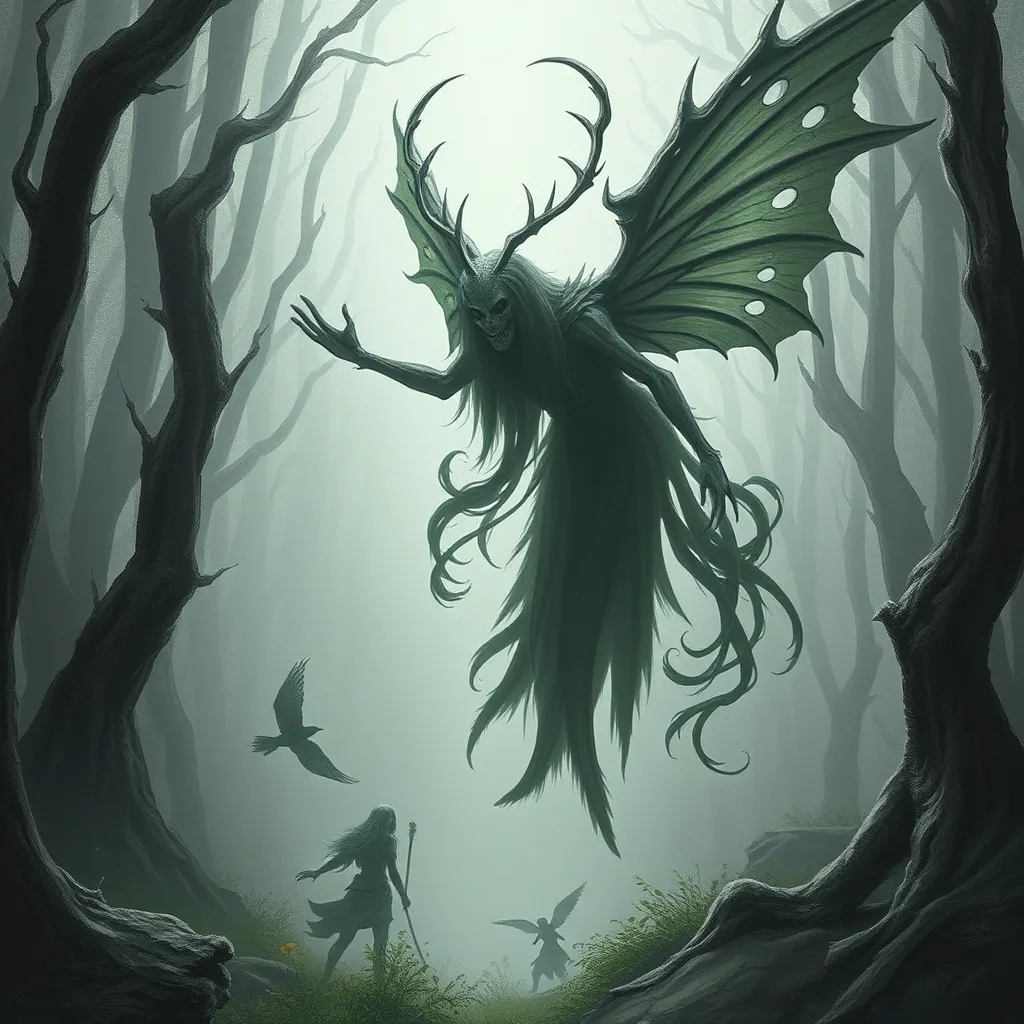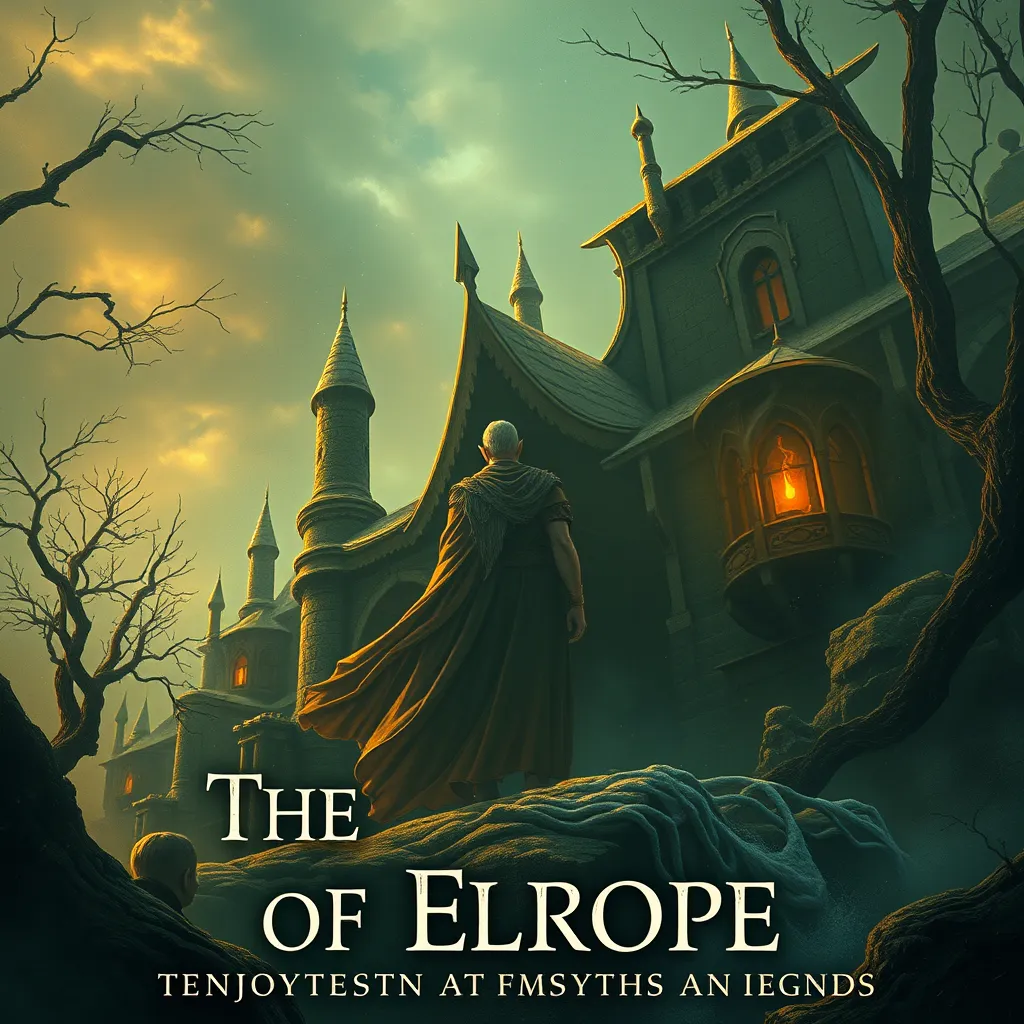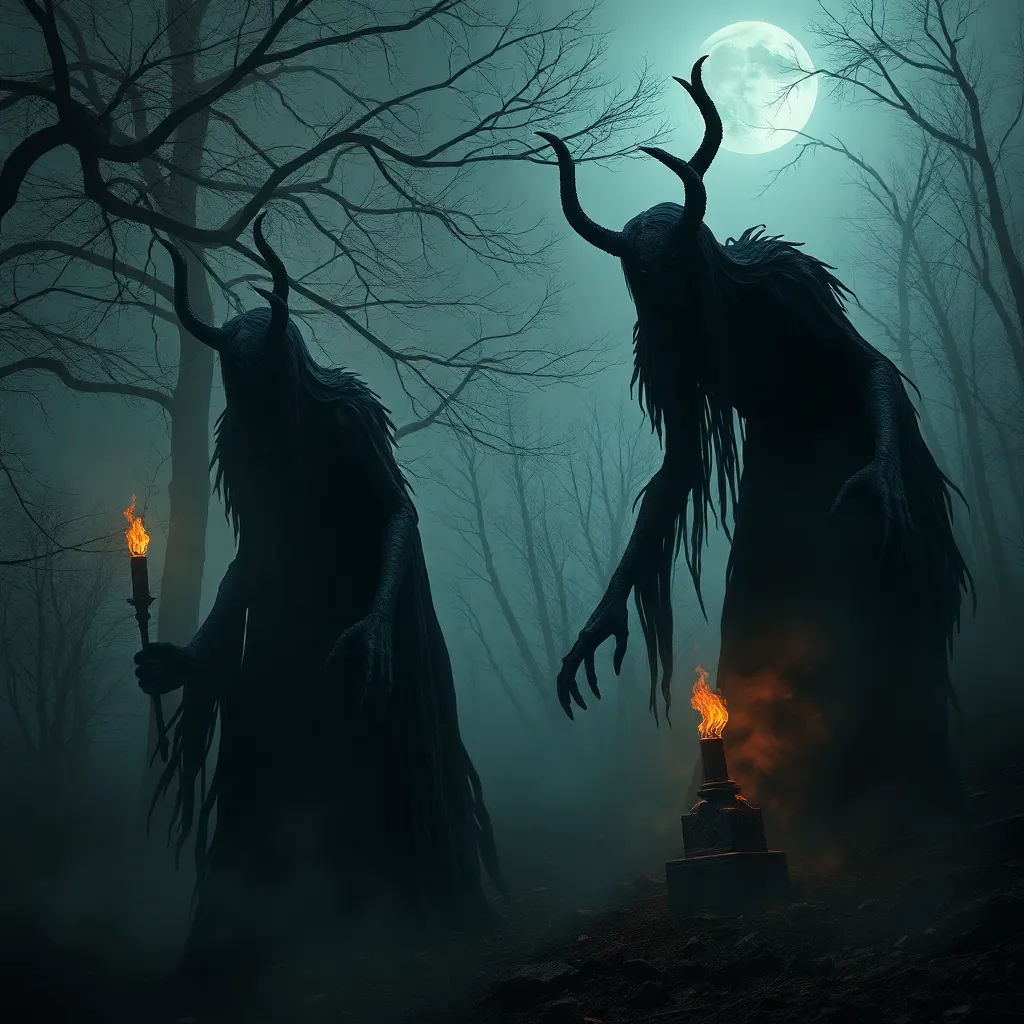Lamia and the Sibyl: Exploring the Parallelism of Oracle Figures in Mythology
I. Introduction
Oracle figures have long fascinated humanity, serving as conduits between the divine and the mortal. From ancient civilizations to modern interpretations, these figures embody the quest for knowledge and understanding of fate. This article delves into two prominent oracle figures from mythology: Lamia and the Sibyl. While both are rooted in rich cultural tapestries, they represent distinct yet parallel elements of prophecy, loss, and transformation. The purpose of this exploration is to uncover the similarities and differences between Lamia and the Sibyl, shedding light on their roles in mythology and their lasting impact on literature and art.
II. Historical Context of Lamia and the Sibyl
A. The origins of Lamia in Greek mythology
Lamia, a figure from Greek mythology, is often depicted as a beautiful woman transformed into a monster. According to myth, she was once a queen of Libya, cursed by Hera to lose her children and become a child-eating demon. This tragic backstory imbues her character with themes of loss and vengeance, as she preys on the offspring of others in her grief.
B. The role and significance of the Sibyl in ancient Rome and Greece
The Sibyls were priestesses in ancient Greece and Rome, renowned for their prophetic abilities. The most famous of these was the Cumaean Sibyl, who resided in Cumae, Italy. The Sibyls played crucial roles in various myths, often serving as intermediaries between gods and mortals, providing guidance and warnings about future events.
C. Cultural impact of both figures in their respective societies
Both Lamia and the Sibyl have left indelible marks on their cultures. Lamia’s story reflects societal fears surrounding female power and the consequences of divine retribution, while the Sibyls embodied wisdom and foresight, often consulted by leaders and citizens alike for their insights into fate.
III. Characteristics of Lamia
A. Description and attributes of Lamia
Lamia is often described as a seductive figure, combining beauty with monstrous traits. In many depictions, she has the upper body of a woman and the lower body of a serpent, symbolizing her dual nature as both alluring and dangerous.
B. The myth of Lamia as a tragic figure
The story of Lamia is steeped in tragedy. After losing her children, she became a restless spirit, consumed by grief and anger. This transformation into a monster serves as a cautionary tale about the depths of despair and the consequences of losing one’s humanity.
C. Lamia’s role as an oracle and her relationship with prophecy
Despite her monstrous form, Lamia possesses prophetic abilities. Some myths suggest that she can see into the future, using her powers to lure and manipulate her victims. Her tragic narrative intertwines with themes of vengeance and the price of knowledge.
IV. Characteristics of the Sibyl
A. Description and attributes of the Sibyl
The Sibyls are often depicted as elderly women, wise and knowledgeable, embodying the archetype of the wise woman. They are frequently shown with scrolls or books, symbolizing their connection to divine knowledge.
B. The various Sibyls in myth and their functions
Throughout mythology, several Sibyls are known, including:
- Cumaean Sibyl: The most famous, known for her prophecies that influenced many Roman leaders.
- Delphic Sibyl: Associated with the Oracle of Delphi, offering cryptic insights.
- Persian Sibyl: Linked to prophecies concerning the fate of empires.
C. The Sibyl’s prophetic abilities and influence on decision-making
The Sibyls were revered for their prophetic insights, often consulted by leaders before making critical decisions. Their prophecies were considered to have divine origins, influencing wars, politics, and religious practices in ancient societies.
V. Thematic Parallels
A. Themes of loss and transformation in Lamia’s story
Lamia’s narrative is rich with themes of loss, as her transformation into a monster is a direct consequence of her grief. This loss leads to her becoming a figure of fear, illustrating how tragedy can lead to profound changes in identity.
B. Themes of wisdom and foresight in the Sibyl’s prophecies
In contrast, the Sibyl represents wisdom and foresight. Her prophecies guide individuals and societies, emphasizing the importance of understanding one’s fate and the responsibilities that come with knowledge.
C. The interplay between fate and free will in both figures’ narratives
Both Lamia and the Sibyl grapple with the concepts of fate and free will. Lamia’s tragic fate is a result of divine intervention, while the Sibyls offer glimpses into the future, challenging individuals to make choices that can alter their destinies.
VI. Symbolism and Representation
A. Symbolic meanings associated with Lamia
Lamia symbolizes the dangers of unchecked emotions and the consequences of vengeance. Her transformation into a monster serves as a metaphor for the loss of humanity in the face of extreme grief.
B. Symbolic meanings associated with the Sibyl
The Sibyl represents wisdom, foresight, and the power of knowledge. Her prophetic abilities symbolize the ability to see beyond the present, offering a glimpse into potential futures.
C. Artistic representations and interpretations of both figures
Throughout history, both Lamia and the Sibyl have inspired artists and writers. Lamia has been depicted in various forms, emphasizing her dual nature, while the Sibyl has been portrayed in classical art, often as a wise woman offering guidance.
VII. Influence on Literature and Art
A. Lamia’s impact on literature and modern adaptations
Lamia’s story has influenced numerous literary works, including John Keats’ poem “Lamia,” which explores her tragic nature and the themes of love and loss. Modern adaptations continue to reinterpret her character, often emphasizing her complexity.
B. The Sibyl’s influence on art, literature, and religious texts
The Sibyl has also left a significant mark on literature and art, appearing in works ranging from Virgil’s “Aeneid” to Michelangelo’s Sistine Chapel ceiling. Her role as a prophetess highlights the importance of divine insight in human affairs.
C. Comparative analysis of how both figures are portrayed across different mediums
While Lamia often embodies tragedy and monstrosity, the Sibyl is portrayed as a figure of wisdom and guidance. This dichotomy showcases the diverse ways oracle figures can be represented, reflecting societal values and fears.
VIII. Conclusion
A. Summary of key findings on Lamia and the Sibyl
This exploration of Lamia and the Sibyl reveals their distinct yet intertwined roles as oracle figures in mythology. Lamia represents the tragic consequences of loss and vengeance, while the Sibyl embodies wisdom and foresight.
B. Reflection on the significance of oracle figures in mythology
Oracle figures like Lamia and the Sibyl serve essential functions within their mythologies, offering insights into human nature, the complexities of fate, and the consequences of choices. They reflect the timeless human desire to understand the unknown and navigate the future.
C. Final thoughts on the enduring legacy of Lamia and the Sibyl in contemporary culture
In contemporary culture, the stories of Lamia and the Sibyl continue to resonate, inspiring adaptations in literature, art, and popular media. Their legacies remind us of the profound themes of loss, wisdom, and transformation that remain relevant throughout human history.



